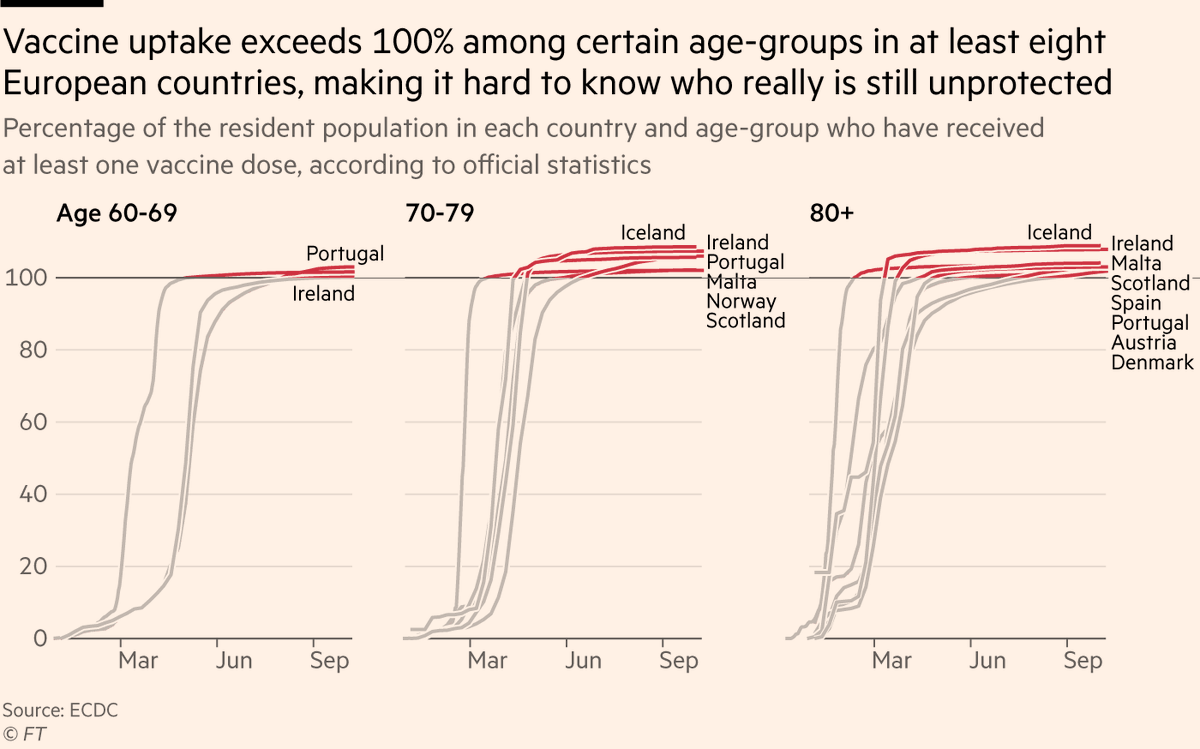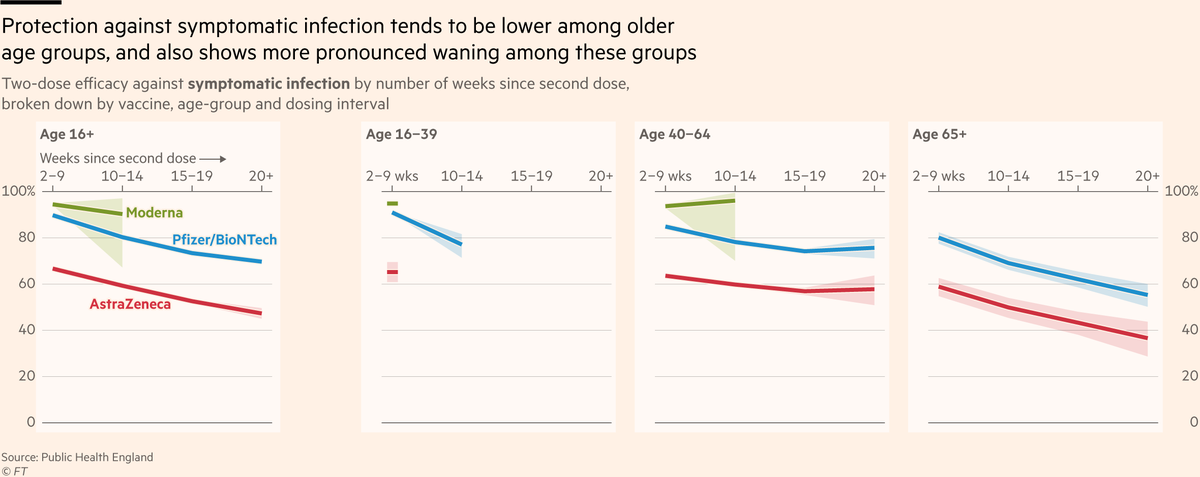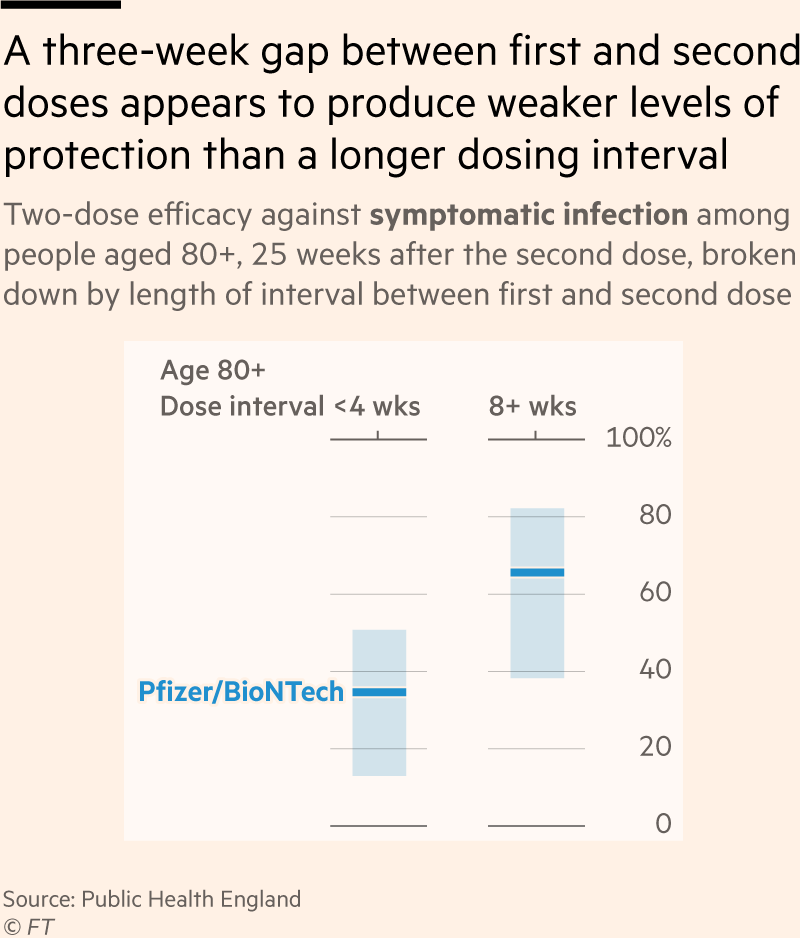
Folks, if you see anyone quoting Alex Berenson / Joe Rogan on how case rates in England are higher among vaxxed than unvaxxed, that data is incorrect, as explained here.
The table they shared is real, but it's wrong.
The table they shared is real, but it's wrong.
https://twitter.com/jburnmurdoch/status/1447617163326545928
Also, FFS this is why UKHSA's persistence in publishing knowingly misleading data is such an utter disaster.
You now have several million people confident in their belief that vaccines don't work, and waving around the official UK documents that prove it.
You now have several million people confident in their belief that vaccines don't work, and waving around the official UK documents that prove it.
And for those asking "at least they didn’t use the specific @UKHSA report, right? ...right?"
They did
They did
https://twitter.com/mroliverbarnes/status/1448609996980330496
Here’s our full story from earlier this week on why that table and a lot of other data on vaccinations in Europe, the US and beyond is misleading, due to faulty population data ft.com/content/125fba…
Important addendum:
@UKHSA are not out there to mislead anyone, and 99.999% of what they’ve published has been exemplary. They’ll emerge from the pandemic with one of the best records worldwide in publishing timely and important data. This was one exceptionally rare misstep.
@UKHSA are not out there to mislead anyone, and 99.999% of what they’ve published has been exemplary. They’ll emerge from the pandemic with one of the best records worldwide in publishing timely and important data. This was one exceptionally rare misstep.
• • •
Missing some Tweet in this thread? You can try to
force a refresh













